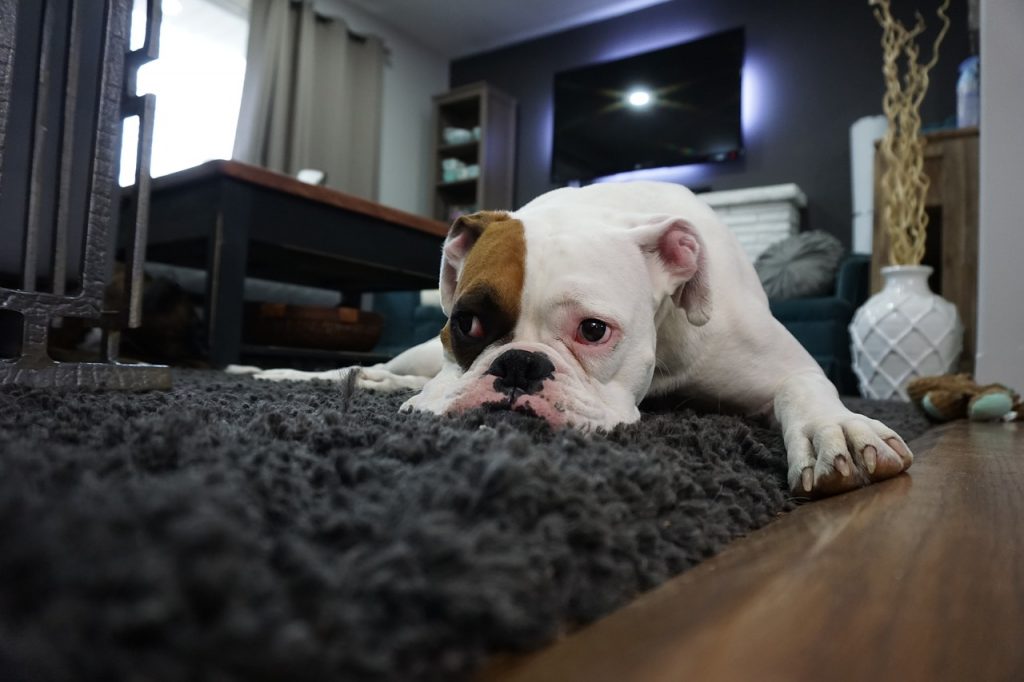
Behavior modification training can teach dogs suffering from separation anxiety to relax and be calm even while their owners are away from the house.
Dogs suffering from canine separation anxiety suffer high levels of stress as well as causing emotional and financial hardships for their owners. However, with some time, patience, persistence and a few behavioral modification techniques, these dogs can often be rehabilitated and be able to lead normal anxiety-free lives in their owner's homes.
Behavioral modification training techniques are geared toward increasing your dog's confidence, allowing your dog to remain relaxed and calm, and relieving your dog's anxiety. When you attempt a behavior modification training regimen for your dog, anti-anxiety drugs may make the process faster and easier. Consult your veterinarian for advice about medications such as Clomicalm or Reconcile.
Though it may be difficult not to punish your dog when you find that he has misbehaved, punishing a dog suffering from separation anxiety is only likely to confuse your dog, cause additional anxiety and be counter-productive. When you find that your dog has made a mess while you are away, simply move your dog to another room and clean up the mess out of your dog's sight.
Positive reinforcement involves rewarding your dog for appropriate behavior. Rewards may be in the form of favorite foods or treats, toys, or attention and affection from you. Only reward your dog when his behavior is calm and relaxed. If your dog is soliciting attention without invitation, greeting you exuberantly or otherwise misbehaving, simply ignore this behavior.
On arriving home after an absence, when your dog greets you at the door, do not pay attention. Go into another room of the house if you need to in order to escape your dog's attention, but do not give your dog the attention he is seeking. Wait until your dog has calmed and is relaxed and then reward your dog.
Before very long, your dog will learn that calm, relaxed behavior brings pleasant rewards and inappropriate behavior does not.
You may want to prepare a special place for your dog in the home where your dog can feel safe and encourage and reward him when he goes to his safe place.
Once your dog has learned to settle and be calm and relaxed, you will need to counter-condition your dog to your leaving the home. This will allow your dog to continue to be calm and relaxed while you leave and after you are gone. Again, you will need time and patience to achieve this.
Start by giving your dog something to distract him for a few moments before you get ready to leave. This may be a favorite toy or a Kong style toy which you can place a favorite food inside. The goal is to distract your dog for 20 to 30 minutes.
When you make your exit, simply leave. Do not stop to say good-bye to your dog. Do not make leaving your home a big deal for your dog.
Another technique useful for counter-conditioning is performing the tasks you normally perform before you leave, but do not actually leave. For instance, put on your coat, pick up your keys and your purse, then sit down on the sofa and watch TV. This will teach your dog that these tasks are not always associated with your leaving and he will not become alarmed when he sees you starting to perform them.
Developing Your Dog's Sense of Independence
When beginning behavioral modification training, it is best to leave your home for very short periods of time at first and return before your dog starts to get upset.
As your pet becomes accustomed to your absences and is more comfortable, you can gradually increase the amount of time you stay away from your house. If you stay away too long and your dog becomes upset, simply decrease the time gone to a more comfortable time for him and try again the next day.
Because most of us have to work and cannot avoid leaving the house for longer periods, try to separate the behavior modification training exercises by altering your routine when you are not training. For instance, when you are going to work, you might crate your dog or place him in a closed room while letting him remain free in the house only when you perform the behavior modification techniques.
Before long, your dog will be comfortable and relaxed while you are away and you will not need to worry about destructive behavior when you leave the house.
